Lighting defines the mood, comfort, and character of a room. Decorative recessed ceiling lights bring subtle sophistication, offering smooth, even illumination that complements modern interiors without drawing attention to the fixture itself. When chosen thoughtfully, they enhance depth, highlight textures, and make spaces feel calm and refined. Below is a closer look at today’s most reliable options, focusing on build quality, visual appeal, and real-world performance, so you can select lighting that truly fits your space.
Why Decorative Recessed Lighting Deserves Your Attention
Recessed lighting is often thought of as purely utilitarian. But when done right, decorative recessed designs fuse aesthetics with performance.
Still, the real test is whether the lighting holds up in real homes. Let’s move into the criteria I used for picking the best.
How I Selected the Best Decorative Recessed Lights?
Choosing the best decorative recessed ceiling lights requires more than comparing brightness or wattage, it’s about understanding real performance, durability, and design harmony. I evaluated each product across several practical areas that truly matter for homeowners and designers alike.
1. Real-World User Experience
Before recommending any product, I reviewed common recessed lighting problems to understand what users experience after months of use — such as flickering, dimming inconsistencies, or early driver burnout. These insights helped me eliminate lights that perform well on paper but fail in actual living conditions.
2. Smooth Dimming and Control
A high-quality light should dim smoothly without flicker or audible noise. I tested how each fixture handled dimmer compatibility and performance at lower light levels, ensuring reliable results. If you’ve ever noticed flicker or uneven brightness while painting or redecorating, you’ll appreciate how much proper lighting consistency matters, something also discussed in our post on the best way to paint edges between wall and ceiling.
3. Heat and Insulation Safety
One often-overlooked factor is proper insulation contact. Lights that lack ventilation or IC safety can overheat quickly. I referred to installation practices similar to those mentioned in our guide on the best way to paint a popcorn ceiling, which highlights how ceiling structure and surface conditions influence overall safety and performance.
4. Trim and Beam Versatility
Decorative lighting isn’t just about brightness — it’s about flexibility. I focused on models with adaptable trim styles and beam spreads that enhance both aesthetics and practicality. For example, if your ceiling color or texture plays a key role in your interior, you can explore how different tones interact with light in our detailed post on the best ceiling paint color.
5. Aesthetic and Design Quality
The beauty of recessed lighting lies in its subtle integration. I evaluated finishes, trim depth, and material consistency to ensure a seamless match with various ceiling designs. This is especially relevant when coordinating with paint shades or architectural details covered in the best way to paint a ceiling.
6. Warranty and Long-Term Support
Reliability goes beyond performance — it includes after-sale support and warranty coverage. I prioritized brands offering strong guarantees and accessible customer service. Just as with paint and finish selection, where quality brands matter most, lighting warranties reflect long-term confidence in craftsmanship.
Top Recommendations for the Best Decorative Recessed Ceiling Lights
Below are some standout models that represent different niches (ultra slim, smart, fire-rated, etc.). Use the verdict and pros/cons to see which fits your scenario best.
1. Ensenior Ultra-Thin LED Recessed Ceiling Lights
Why it stands out:
Pros:
Cons:
Verdict:
A top-tier pick for those who want the blend of aesthetics and performance , especially useful when you need high quality recessed lighting with minimal depth.
2. TORCHSTAR Dimmable Slim LED Lights
Why it’s interesting:
Pros:
Cons:
Verdict:
A good option if you want decent decorative recessed lighting on a budget, but you should test early , especially dimmer behavior.
3. Amico Ultra-Thin LED Recessed Lighting Kit
Why it’s interesting:
Pros:
Cons:
Verdict:
Great middle-ground choice , you get many benefits of best quality led recessed lights without paying ultra-premium. But test in your setup before full install.
4. Sunco Slim Recessed Downlight
Why it’s interesting:
Pros:
Cons:
Verdict:
A solid, dependable option. If you don’t need features like smart color or extreme slimness, this might be your most practical “go-to.”
5. Lumary RGBAI Gimbal Smart Recessed Light
Why it’s unique:
Pros:
Cons:
Verdict:
If you want decorative accent lighting combined with smart control and versatility, this is one of your best bets for modern decorative recessed lighting.
6. NuWatt Canless Slim LED Wafer Light
Why it’s attractive:
Pros:
Cons:
Verdict:
Excellent for tight ceilings where depth is the enemy. Use in spots where you prioritize aesthetics and minimalism over demanding performance.
7. NuWatt Fire-Rated Recessed Light
Why it’s important:
Pros:
Cons:
Verdict:
When safety and compliance matter, this is a go-to. Use in zones (e.g. corridors, walls adjacent to stairs) where fire rating is non-negotiable.
8. NuWatt Smart RGBW Retrofit Downlight
Why it’s compelling:
Pros:
Cons:
Verdict:
Best if you want to upgrade existing recessed lights into smart, decorative ones without redoing housing.
Pros & Cons Across the Board: Common Patterns & Gotchas
From testing and reviews, here are recurring trade-offs to watch out for (gaps many articles ignore):
| Issue | Why it matters | How to mitigate |
|---|---|---|
| Dimmer incompatibility / flicker at low levels | Many LED lights perform poorly under non-LED dimmers, causing buzzing or flicker | Use LED-compatible dimmers, test at low dim (5 %) before full install |
| Color shift over time | Cheap LEDs may shift toward green or yellow after a few years | Choose high CRI / quality brands; check warranty & reviews |
| Under-ventilation or overheating | In slim cans or wafer styles, heat can shorten life | Avoid enclosing in insulation unless IC-rated; ensure airflow |
| Trim mismatch or fit issues | If the trim doesn’t snap well, aesthetic compromise or light leakage occurs | Confirm cut-out dimensions and trim compatibility |
| Early driver failure | Many failures stem from cheap drivers rather than LEDs | Favor units with quality driver specifications, warranties |
| Warranty limbo / brand instability | If a brand fails, part replacement becomes impossible | Stick with established brands or vetted ones |
Buying Tips & Installation Advice
Even the best decorative recessed ceiling lights can fall short if placement and installation aren’t done correctly. Paying attention to spacing, insulation safety, trim type, and dimmer compatibility ensures balanced light, safety, and long-term performance.
Spacing and Layout
Lighting layout defines how evenly a room is illuminated. The general “half-height rule” works best — keep lights spaced roughly half the ceiling height apart (for an 8-foot ceiling, about 4 feet).
Housing, Insulation Contact, and Airtightness
Proper housing choice ensures both energy efficiency and safety. IC-rated fixtures are best for insulated ceilings, while airtight models prevent heat loss and condensation. If your ceiling has an uneven surface or texture, you’ll find helpful preparation ideas in the best way to paint a popcorn ceiling, which also explains how lighting and ceiling prep work together.
Trim Choice and Beam Control
Trim style determines both the visual appearance and how light spreads through your room. Baffle trims reduce glare, reflector trims provide stronger brightness, and gimbal styles let you adjust the beam direction. For design inspiration, explore the best ceiling paint color; it shows how color tones interact with lighting temperature to create different moods.
Dimmers and Drivers
Always pair recessed LEDs with dimmers designed specifically for LED lighting. This avoids flickering or uneven brightness when lights are dimmed to lower levels. If your ceiling has color transitions or detailed edges that need attention during installation, visit our tutorial on the best way to paint edges between wall and ceiling , it includes useful lighting placement insights for a clean, seamless finish.
Maintenance and Checkups
Recessed lighting is low-maintenance, but a few small steps keep it performing well:
- Dust the trims gently every few months.
- Listen for buzzing that could indicate loose dimmer connections.
- Replace any fixtures that show uneven brightness or color shift.
- Keep a note of your color temperature and trim type for consistent replacements later.
By following these installation and care tips, along with proper ceiling preparation and color coordination — your recessed lighting setup will look cleaner, last longer, and feel professionally balanced.
Final Verdict: Which One Should You Pick?
If I had to pick one “do-it-all” recommendation, Ensenior Ultra-Thin LED Recessed Ceiling Lights sit closest to the balance of aesthetics, longevity, and reliability.
- Tight ceilings / remodel → wafer or ultra-thin
- Accent / art / decorative needs → NuWatt Smart RGB / gimbal smart models
- Fire & code safety → fire-rated variants
- Budget / multiple rooms → mid-tier balanced lights like Sunco or Amico
- Smart upgrade in existing system → retrofit smart downlights
Whichever you pick, test early, match dimmers, and plan your trim style ahead. That’s how you turn decorative recessed lighting from “nice idea” to long-term delight.

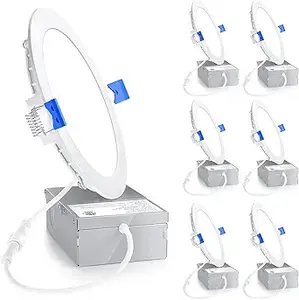
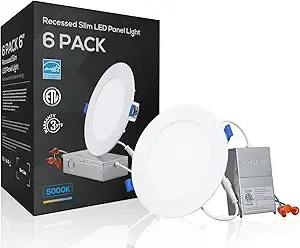
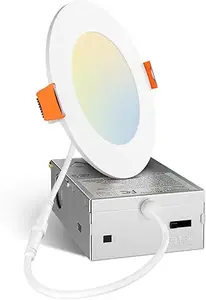
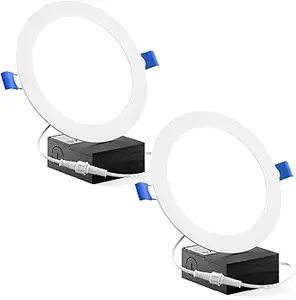
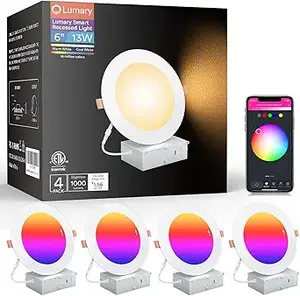
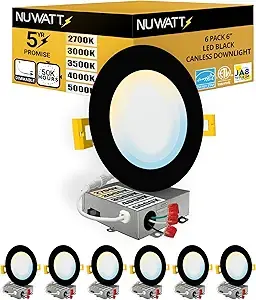
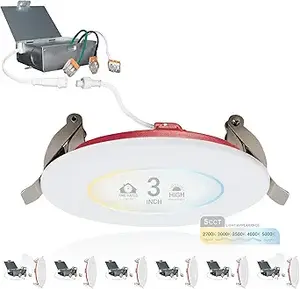
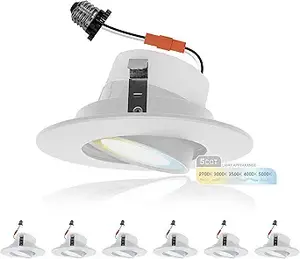
Leave a Reply